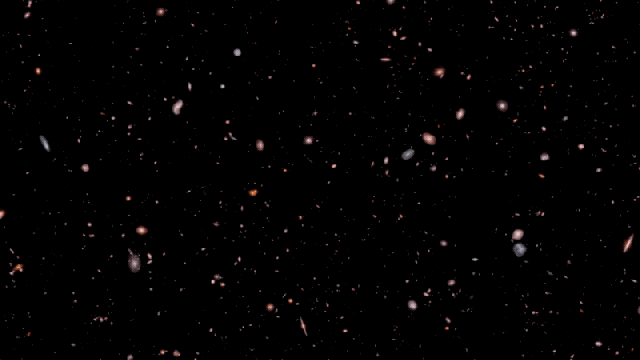A team of researchers scrutinising the Extended Groth Strip, a region of space between the constellations Ursa Major and Boötes, saw fewer growing supermassive black holes and less dust than they expected.
The team was investigating active galactic nuclei, or AGN, galactic cores that expel high amounts of radiation, sometimes in the form of particle jets. The observations were made using data from the Webb Space Telescope’s Mid-Infrared Instrument (MIRI). The team’s research is currently hosted on the preprint server and is set to publish in The Astrophysical Journal.
“As it turns out, these black holes are likely growing at a slower pace than previously believed, which is intriguing, considering the galaxies I examined resemble our Milky Way from the past,” said Allison Kirkpatrick, an astronomer at the University of Kansas and the study’s lead author, in a university release. “Earlier observations using Spitzer only allowed us to study the brightest and most massive galaxies with rapidly growing supermassive black holes, making them easy to detect.”
Black holes are massive objects with gravitational fields so intense that not even light can escape their event horizons (hence their blackness). Supermassive black holes, at hundreds of thousands to billions of times the Sun’s mass, are some of the largest objects in the universe. They lurk at the cores of galaxies, where they accrete (pull in) and occasionally belch up material.

The Webb telescope launched into space in December 2021 and began scientific operations in July 2022. In the past year and change, the telescope has imaged everything from ancient galaxies to planets in our own solar system. Webb is sitting at a region in space called L2, about one million miles from Earth, where it images the cosmos in relative peace.
The Extended Groth Strip, which is near the handle of the Big Dipper, is the target of the Cosmic Evolution Early Release Science (CEERS) program. The program investigates some of the earliest galaxies and their structures, as well as the conditions in which stars and black holes grow. Last year (to the day, in fact), the program published a mosaic image composed of 690 individual frames that showcased some ancient galaxies, including one of the oldest ever imaged.
That galaxy—named Maisie’s Galaxy—is about 13.4 billion years old, at a redshift of z=11.4. Earlier this month, astronomers confirmed some of the redshifts of galaxies seen in the earlier CEERS imaging. Last month, the Space Telescope Science Institute produced a mind-blowing visualisation that takes you through a section of the Extended Groth Strip deep field in 3D.
“The study’s findings suggest that these black holes are not growing rapidly, absorbing limited material, and perhaps not significantly impacting their host galaxies,” Kirkpatrick said. “This discovery opens up a whole new perspective on black-hole growth since our current understanding is largely based on the most massive black holes in the biggest galaxies, which have significant effects on their hosts, but the smaller black holes in these galaxies likely do not.”
Thanks to the particularly precise launch of the telescope, Webb may be able to stay in operation for over a decade (the mission’s baseline is five years.) More findings about galactic evolution and the supermassive black holes at their cores could be on the horizon—especially if potential projects like the Event Horizon Explorer have any say in the matter.
